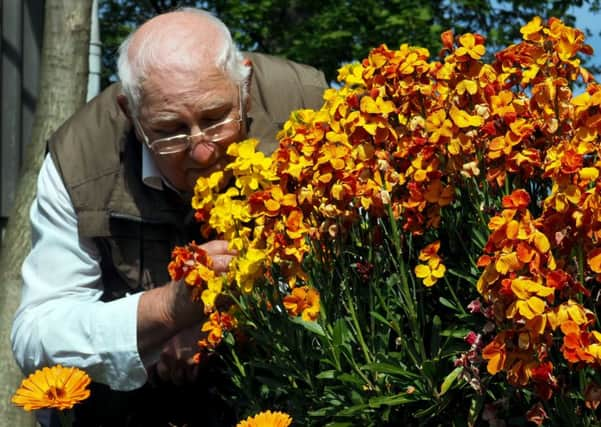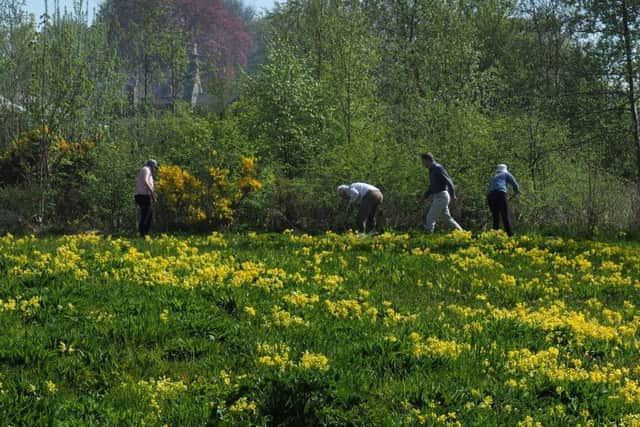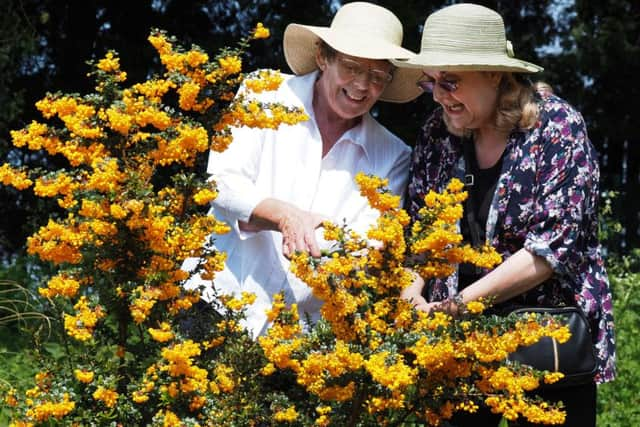Breathing new life into Sheffield park meadow for people to enjoy


“The ground is bad,” he said. “Broken concrete, bricks, blue and yellow clay, and it’s very wet. It’s not a good area. But some plants enjoy that sort of thing.”
The glowing cowslips around him, for example, and the black knapweed which will feed goldfinches later in the year. Naturalist colleague Gavin Baxter said: “We started with five cowslips in the corner of the field eight years ago and they’ve increased every year until we have about 5,000 now.”
Advertisement
Hide AdAdvertisement
Hide Ad

All done by twice-yearly mowing and allowing the plants to self-seed, said Ernest. “Everything here is geared up for flowering and berry-bearing - the ecology of birds and bees.”
Half a dozen Friends of Graves Park were busy tidying the meadow to lead the public next weekend into the new arboretum at its official opening ceremony this Sunday, May 15. Naturalist and landscape historian Professor Ian Rotherham will lead a history walk from the park’s Rose Garden café starting at midday before opening the arboretum to the public.
The walk will take in evidence of ancient woodlands, the medieval deer park, the old ‘London Road’ through the park and signs of ancient earthworks where modern park users play football and cricket.
“Graves Park is one of the most important sites in Sheffield in terms of history, prehistory and archaeological sites,” said Caroline Dewar of the Friends of Graves Park. “We also think it’s one of the largest urban parks in Europe.”
Advertisement
Hide AdAdvertisement
Hide Ad

Drawing from over 200 members, Caroline reckons 50 or more Friends (and friends of Friends) have been involved so far in the group’s projects to transform the old Sheffield Council greenhouse and nursery site near Norton Lane. The Friends helped bring in a Big Lottery Fund Breathing Places grant for Chantreyland Meadow to help establish the ponds and meadows as a nature reserve: so far 170 wildflower species, 68 different birds, 23 butterfly species and five types of dragonflies and damselflies have been recorded.
Gavin Baxter listened carefully last Sunday by way of demonstration: “At the moment we can hear wren, goldfinch, chaffinch, blackbird, dunnock, greenfinch, robin, great tit and blue tit. And church bells too.”
The Friends have been working on the arboretum area for five years, and reckon the site is now well-enough established to open up to the rest of Sheffield.
“We say the Graves Park arboretum is a mix of distinctive trees,” said Caroline Dewar. “I think it compares very favourably to gardens you’d pay money to see, and it’s free to the people of Sheffield. There are people from this area who have money and a car and can go to Chatsworth or Haddon Hall, but what do you do if you can’t? Well, you can either get the bus, or walk here where you can get it for free.” Visitors to Graves Park come from Gleadless Valley, Heeley, Lowedges and further, she said, not just from the roads round the park.
Advertisement
Hide AdAdvertisement
Hide Ad

Ernest Brewin appeared to have a personal backstory for many arboretum residents. “Fifty years ago my sister brought some Monterey pine cones back from the south coast, and when they exploded one day in her living room, she gave the seeds to me.” (Several are now over six feet tall in Graves Park).
“This rowan has pink berries in winter – I took the seeds from a garden in Glencoe,” he said.
“The gingko bilobas are 250 million years old. They were from a council tree officer who said ‘I’ve got a couple of surplus gingkos for you.’ The first tree to recover after Hiroshima, they’re very strong and resilient,” Ernest noted, before resiliently mowing the grass between several of the park’s distinctive trees.
The volunteers of the Friends of Graves Park have done a remarkable job of transforming two pieces of muddy wasteland, and would welcome more local members to keep the work going.
Advertisement
Hide AdAdvertisement
Hide Ad

“We need people passionate about wildlife and the outdoors, people who can start with nothing and create something,” said Gavin Baxter. There’s lots more to do, say the Friends, if you enjoy that sort of thing.
Visit www.gravespark.org for details.